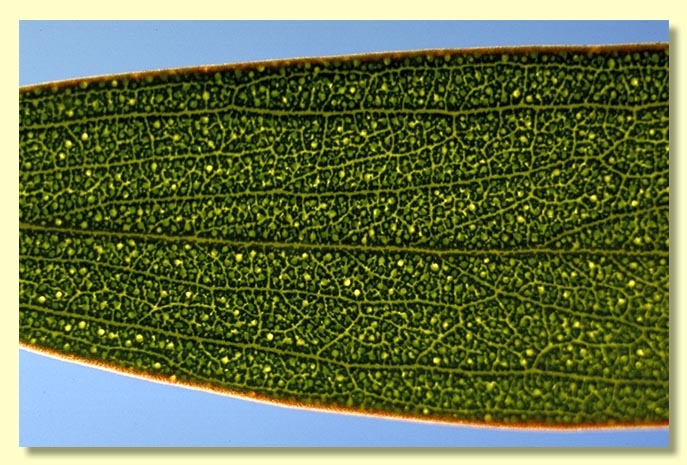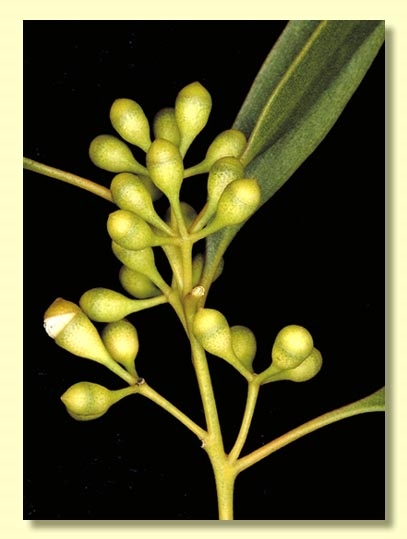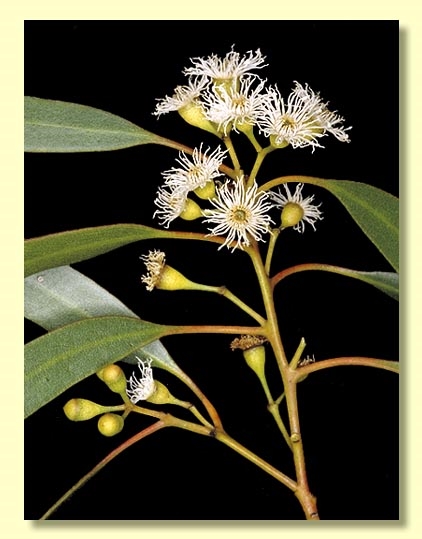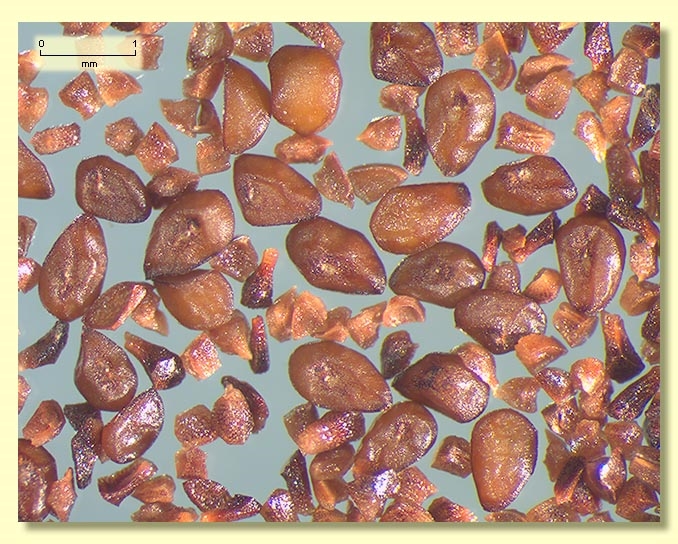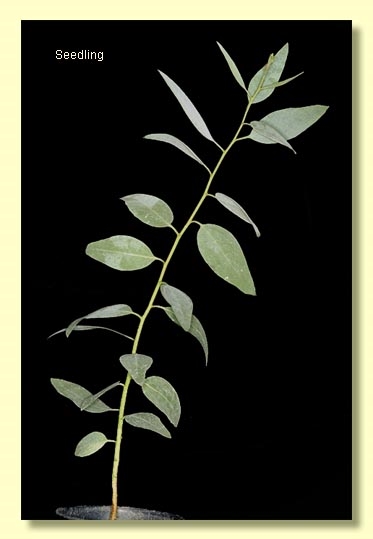Euclid - Online edition
Eucalyptus yilgarnensis
Eucalyptus | Symphyomyrtus | Bisectae | Destitutae | Heterostemones
Bark rough over part or all of trunk, grey-brown to dark-grey, flaky, or smooth throughout and brown-grey to coppery, olive green or pinkish grey, branches smooth.
Branchlets lacking oil glands in the pith.
Juvenile growth (coppice or field seedlings to 50 cm):stems rounded in cross-section; juvenile leaves always petiolate, alternate, narrowly elliptical to lanceolate or ovate, 4–7 cm long, 1–2.3 cm wide, dull, blue-grey.
Adult leaves alternate, petioles 0.5–2.5 cm long; blade narrowly elliptic to narrowly lanceolate or linear, (4.8)5–8(10) cm long, 0.5–1.5(2) cm wide, base tapering gradually to petiole, margin entire, apex pointed, concolorous, glossy, green, side-veins very acute, reticulation usually sparse to moderate, intramarginal vein present, oil glands island or intersectional.
Inflorescence axillary unbranched, peduncles 0.4–1.5 cm long, buds 7(9), slenderly pedicellate, pedicels 0.2–0.6 cm long. Mature buds pyriform or obovoid (0.3–0.6 cm long, 0.2–0.3 cm wide), scar present (outer operculum shed early), operculum rounded and often apiculate or sometimes conical (0.1–0.2 cm long), stamens inflexed, outer stamens longer but without anthers (staminodes), inner stamens much shorter and fertile, anthers globular to reniform, sub-versatile, basifixed, dehiscing by terminal pores, style long and straight, stigma tapering to rounded, locules 3(4), the placentae each with 4 vertical rows of ovules. Flowers white.
Fruit pedicellate (pedicels 0.2–0.8 cm long), barrel-shaped, 0.4–0.6 cm long, 0.3–0.4 cm wide, disc descending obliquely, valves 3(4), enclosed.
Seeds tan, 0.8–2 mm long, flattened-ovoid, often pointed at one end, dorsal surface ± smooth, hilum ventral.
Cultivated seedlings (measured at node 10): cotyledons Y-shaped (bisected); stems rounded in cross-section; leaves always petiolate, opposite for 5 to 12 nodes then alternate, ovate to elliptic or shortly lanceolate, 3.5–6.5 cm long, 1.2–3 cm wide, dull, greyish, non-glaucous.
Flowering has been recorded in April, May, June, July, August, September, October and November.
A mallee or rarely a small tree endemic to Western Australia, widespread and common in the central and southern wheatbelt and the goldfields, from Wongan Hills south-east to Lake Grace and east as far as Kalgoorlie, Lake Minigwal, Zanthus, Balladonia and Salmon Gums. The bark is rough, often tessellated on the lower part of the stems and the adult leaves glossy green.
Eucalyptus yilgarnensis belongs in Eucalyptus subgenus Symphyomyrtus section Bisectae subsection Destitutae because buds have two opercula, cotyledons are Y-shaped and branchlets lack oil glands in the pith. Within this subsection E. yilgarnensis is one of seven closely related species that form series Heterostemones. This series is characterised by the barren outer stamens that are conspicuously twisted and spreading in flower and the much shorter fertile inner stamens that are held erect. Species in this group also have small fruit with a descending disc and enclosed valves while the leaves have side-veins quite acute at the base of the lamina and usually sparse reticulation.
E. yilgarnensis has conspicuously pedicellate small buds with a shallowly rounded to conical operculum, fruit that are rounded in cross-section, barrel-shaped and never more than 0.4 cm diameter and ovate to elliptical juvenile leaves. The closest relative and species most likely to be confused is E. gracilis which, by comparison, has shorter stout pedicels with larger fruit to 0.7 cm diameter and narrower juvenile leaves. Other related species likely to be confused are E. brevipes, which has shortly pedicellate buds with a conical to beaked operculum and larger more cylindrical fruit, and E. celastroides subsp. virella which has buds square in cross-section at the base, have a conical operculum and urceolate fruit. E. celastroides subsp. celastroides differs further in having a grey-green to glaucous crown. The remaining species in series Heterostemones, E. calycogona, E. prolixa and E. quadrans, all have buds and fruit square in cross-section and should never be confused with E. yilgarnensis.



